
The first step to hosting effective meetings is crafting a comprehensive meeting agenda. Think of it as your trusty compass, guiding you toward those defined objectives and ensuring every minute counts.
Whether you're steering the ship as a team leader, project manager, or organizational planner, knowing the art of creating purposeful meeting agendas is your secret weapon for success. In this article, we're not just going to talk theory — we'll dive into practical meeting agenda examples, breaking down the elements that transform those run-of-the-mill meetings into strategic power sessions.
1. One-on-one meeting agenda
Regular one-on-one meetings are all about creating a space for open dialogue, goal alignment, and professional growth.
When you're laying out that one-on-one meeting agenda, think beyond the usual task updates. Focus on crafting a personalized discussion that will strengthen the bond between you and your team members. A stellar one-on-one agenda should include:
- Pre-meeting check-in: Before the meeting even begins, get a feel for how well your team member is handling their role and responsibilities with a quick survey. Use their feedback to tailor the focus of the meeting.
- Personal check-in: Kick things off with a quick personal check-in. Break the ice and set a positive tone for the rest of the meeting.
- Professional development: Discuss career goals and skill-building opportunities. Remember, it's not just about tasks; it's about nurturing their professional journey.
- Task and project updates: Review ongoing work. Let your team member share progress or challenges and ask for support if needed.
- Feedback and recognition: Create a spotlight for achievements and constructive feedback. Motivate them to reach new heights.
- Goal setting and alignment: Set goals that align with both their aspirations and the organization's objectives. Clear expectations for deliverables and timelines keep everyone on the same page.
- Open discussion: Wrap it up with an open floor. Any concerns or questions lingering? Now's the time to address them.
- Action items and follow-up: Summarize the game plan. Define next steps, responsibilities, and deadlines. And don’t forget to follow up on previous action items — it's the glue that keeps progress together.
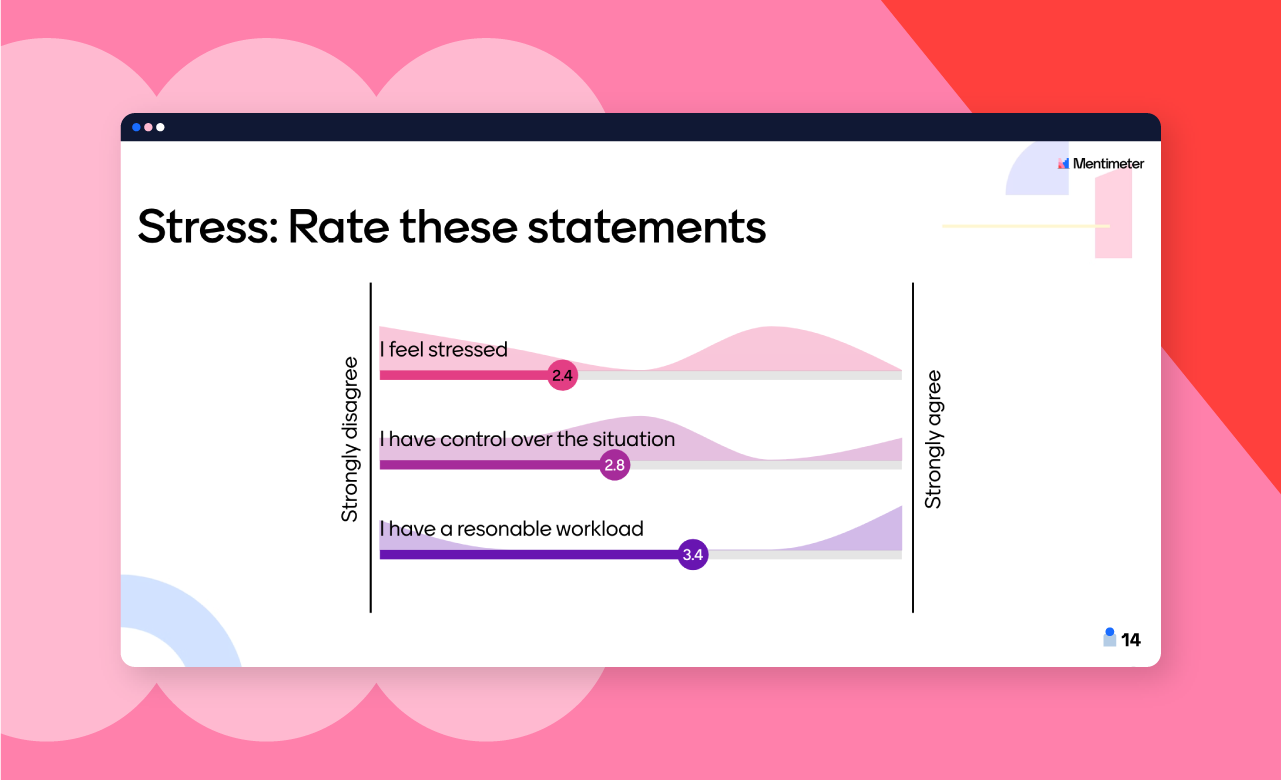
2. Daily Scrum meeting agenda
Daily Scrum meetings are short, focused gatherings that allow Scrum team members to sync up, chart progress, and tackle obstacles. In these meetings, each team member drops a brief update of their work to confirm everyone is aligned toward achieving sprint goals.
Agile is all about trimming the fat for maximum productivity, and these meetings are no exception. Keep it snappy — 15 minutes or less — for that laser-sharp focus.
An effective daily Scrum meeting agenda should cover:
- Daily goals and achievements: Kick off with a speedy recap of the team's goals for the day and shine a light on yesterday's victories.
- Individual updates: Team members take the mic to share what they nailed since the last meeting, what's on their plate today, and any pesky obstacles in their way. This is key for accountability and early obstacle detection.
- Challenge resolution: Dive into the hurdles. Focus on team-driven problem-solving and craft action items to bulldoze those barriers.
- Task coordination: Ensure everyone’s on the same page regarding tasks and responsibilities. Smooth coordination keeps the workflow sailing — no bottlenecks allowed.
- Follow-up from the previous day: Look back at any loose ends or pending action items from yesterday and close those gaps
- Continuous improvement: Wrap it up with a nod to progress — discuss tweaks and optimizations to the team's processes. It's a few minutes that can spark big improvements.

3. Weekly hybrid meeting agenda
We’re in the era of hybrid meetings — where in-person and virtual high-fives come together. It's not just about blending the physical and digital; it's about maintaining team synergy, sharing updates, and fostering collaboration, no matter where your team members are logging in from.
When you're crafting the agenda for these hybrid rendezvous, inclusivity is the name of the game. Consider time zones and embrace new tech — whatever it takes to make every team member feel heard and valued.
Cue in hybrid collaboration tools like Mentimeter. We make it easy for teams to share thoughts and feedback in real time, regardless of where they’re planted. Learn how Mentimeter connects hybrid teams.
Key components of weekly hybrid meeting agendas cover:
- Roll call and icebreakers: Start with a shout-out to both on-site and remote participants. Throw in a snappy icebreaker to sprinkle in some fun and refamiliarize everyone with their teammates.
- Team updates: Get the scoop on what’s cooking in different corners, keeping everyone in the loop.
- Discussion topics: Zoom in on the nitty-gritty to discuss specific projects, hurdles, and future moves. Here’s your chance to encourage open dialogue and collaboration!
- Announcements and recognition: Share important stuff — shout-outs, celebrations, and recognizing team heroes. Celebrate wins, big and small.
- Q&A: Create space for questions, insights, and concerns. It’s an open forum where voices — anonymous or not — get a chance to shine.
- Action items and next steps: Wrap it up with a game plan. What's on the agenda for the upcoming week? Summarize action items, define responsibilities, and set those deadlines.
4. Project brainstorming meeting agenda
Brainstorming meetings are dynamic sessions where creative ideas, solutions, and strategies collide. It's not just a meeting; it's a powerhouse of innovation fueled by your team’s diverse insights.
When crafting the agenda for your project brainstorming session, think of it as setting the stage for a creative symphony. Here's what to include:
- Icebreaker or warm-up activity: Kick off with a spark. A brainstorming icebreaker gets those creative juices flowing, easing everyone into the innovation zone.
- Project overview: Set the scene with a clear snapshot of the project — its context, goals, and challenges.
- Ground rules: Lay out rules that foster open-mindedness, nonjudgmental collaboration, and a welcoming space for even the wildest ideas.
- Idea generation techniques: Use brainstorming techniques like mind mapping, word clouds, or a good ol' SWOT analysis. Let creativity flow in structured chaos.
- Group discussion: Set aside ample time for your team members to shine. Elaborate on ideas, ask questions, and throw in some feedback.
- Follow-up plan: Close the curtain with a game plan. Outline the next steps, jot down action items, and share documents and notes. Let the conversation echo beyond the meeting room.
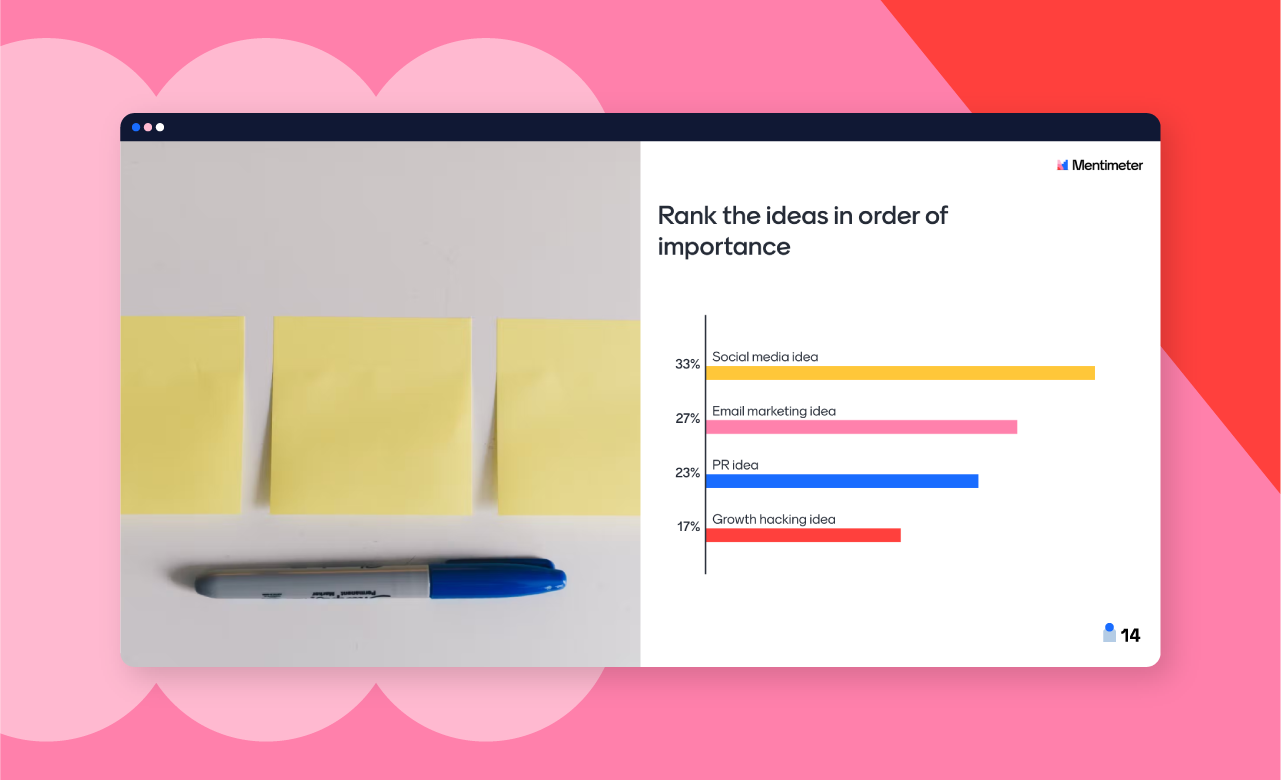
5. Leadership team meeting agenda
An organization is only as good as its leaders, and even the top dogs need to meet now and then to keep their strategies aligned. Regular leadership meetings let you keep a pulse on strategic decisions, problem-solving, and progress.
A well-structured leadership meeting agenda should cover a range of topics to address the organization's overarching goals and challenges, like:
- Strategic updates: Leadership meetings should start with updates on initiatives, performance metrics, and the journey toward those lofty organizational goals.
- Financial review: Time to talk numbers. Things like budget updates and revenue projections influence strategic decisions.
- Market and industry analysis: Dive into market trends, competitor strategies, industry changes, and other external factors that could influence your next moves.
- Key performance indicators (KPIs): Review KPIs to measure the effectiveness of current strategies and find areas for improvement.
- Strategic initiatives and projects: Set aside time to discuss ongoing and upcoming strategic initiatives. Make sure to address roadblocks and celebrate project milestones.
- People and talent: Cover HR-related topics like talent management and leadership development.
- Innovation and future planning: Time to don the visionary hat. Discuss innovations and emerging tech, and map out the road ahead. Think beyond the hurdles to envision long-term success.
- Open discussion and feedback: Wrap it up with a forum. Let leaders share insights, voice concerns, and collectively tackle challenges.
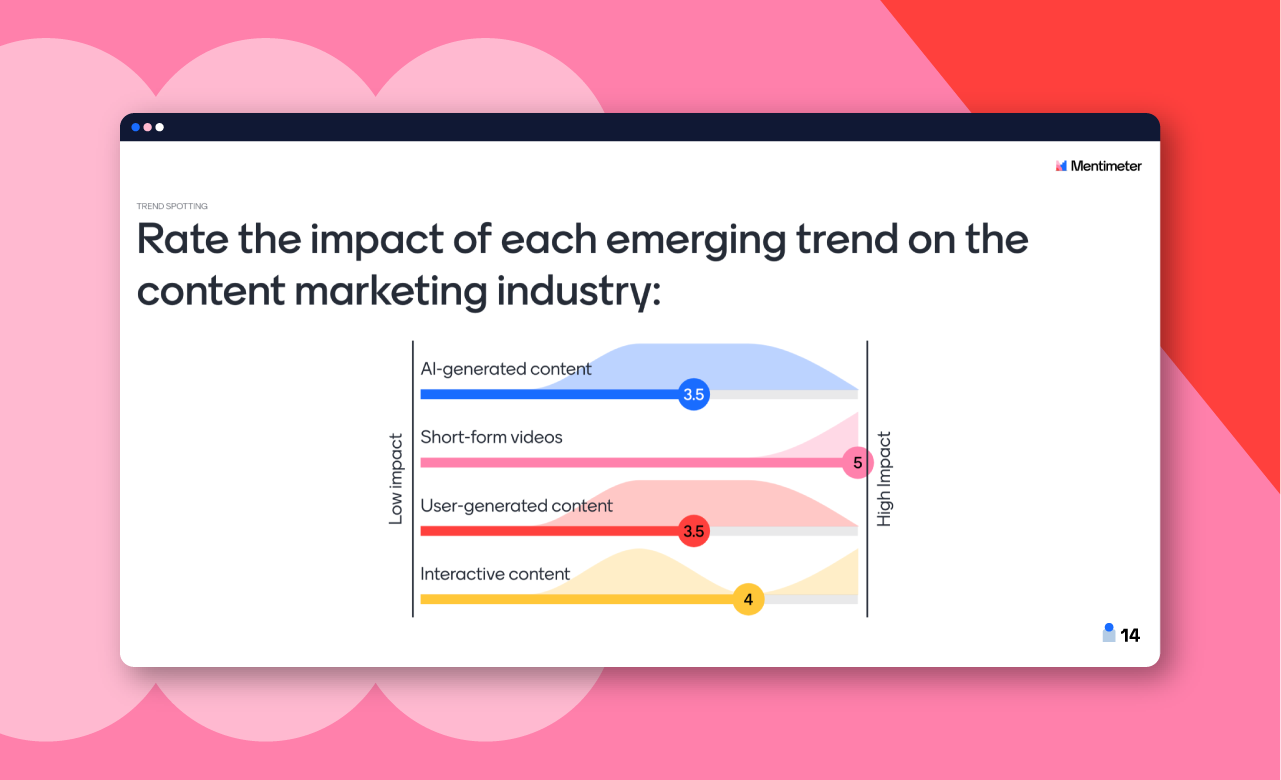
6. Retrospective meeting agenda
Retrospective meetings, a key aspect of Agile methodologies like Scrum, allow teams to hit pause, reflect, and plot a course for continuous improvement. It’s a space to celebrate wins and tackle challenges head-on.
A well-structured retrospective meeting agenda can help maximize the value you get from these sessions. It should include:
- Welcome and warm-up: Start the meeting with a brief welcome and an icebreaker to create a positive, open atmosphere.
- Review of recent sprint/project: Allocate time to review the recently completed sprint or project, including successes and challenges.
- Celebrate achievements: Cue the applause. Dedicate time to celebrate victories and milestones, big and small.
- Challenges and areas for improvement: Create space for team members to vent about what worked and what could use a tweak. Encourage open communication and constructive feedback.
- Summary of action items: Follow up with clear steps for the team to implement changes in the upcoming sprint or project.

7. All-hands meeting agenda
All-hands meetings provide a rare opportunity for leadership to address and engage with the entire organization at once. But with the sheer number of participants in these meetings, chaos can reign without a guiding agenda.
All-hands meetings should place an even greater emphasis on transparency, team-building, and inclusivity. This is your chance to reinforce a company-wide collaborative work culture.
That said, an all-hands agenda should include:
- Leadership updates: Set the tone with insights from the top guns, including the CEO or department heads. It's the scoop on company performance, strategies, and the roadmap ahead.
- Employee recognition: Carve out a segment to celebrate individual and team victories. It's not just about wins; it's about knitting that sense of pride and unity.
- Company-wide initiatives and announcements: Unveil the grand plan. Share the lowdown on company-wide initiatives, policy shifts, and upcoming events. A well-informed organization is a connected community.
- Q&A session: Open the floor to questions, feedback, and active participation so everyone can be part of the conversation.
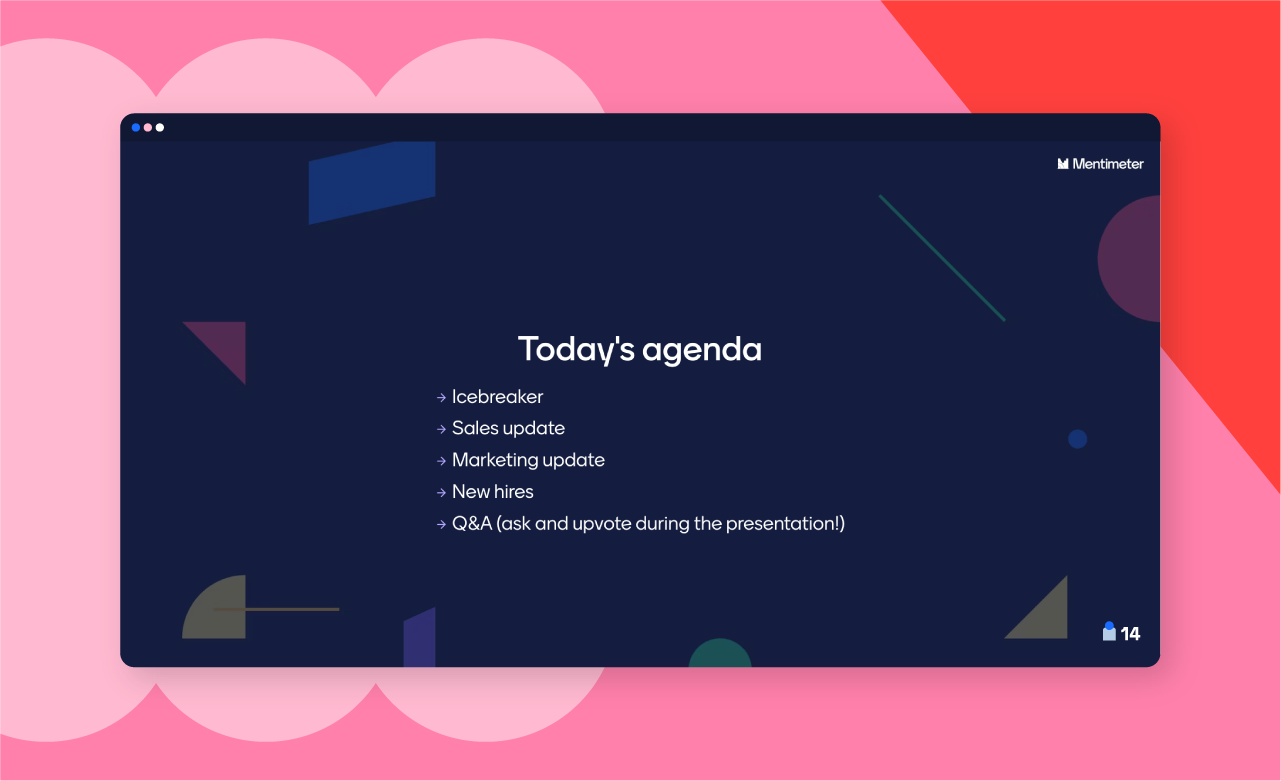
8. Project kickoff meeting agenda
The goal of project kickoff meetings is to align team members and lay the groundwork for successful collaboration. That said, there’s a lot of information to cover to make sure every team member knows the project’s objectives and what’s expected of them.
Crafting a well-organized project kickoff meeting agenda invites clarity, understanding, and enthusiasm among stakeholders. Let’s break down the essentials:
- Team introductions and roles: Roll call, spotlight on. Start with team introductions, painting a vivid picture of who's who and the roles they play in this project tale.
- Project scope and objectives: Define the project's scope, objectives, and what success looks like.
- Timeline, milestones, and deliverables: Dive into timelines, key milestones, and those golden deliverables. Make sure everyone understands what they’ll be responsible for.
- Q&A session: Open the floor for a Q&A session, where team members can ask questions, address concerns, and reach a common understanding.
- Next steps and action items: End the meeting by summarizing key takeaways and outlining the next steps.
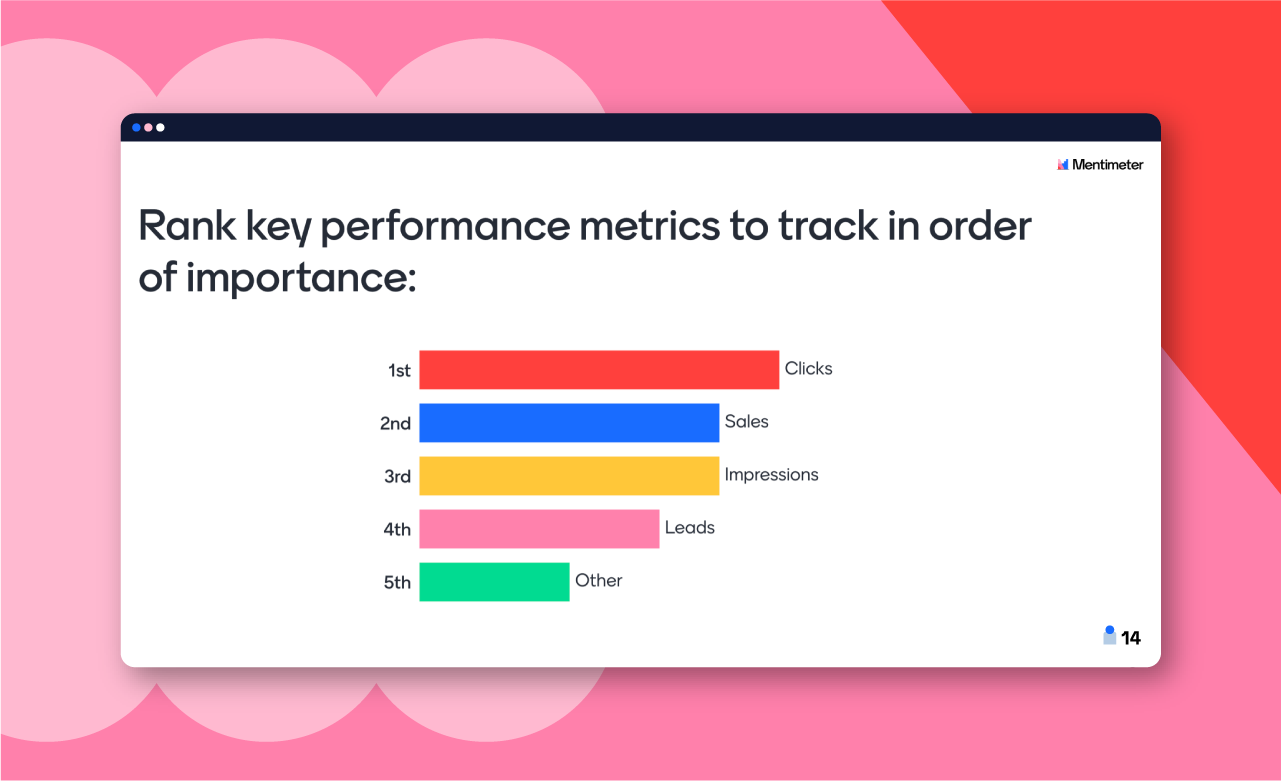
9. Board meeting agenda
Board meetings are important for decision-making and strategic discussions. These meetings are generally held at regular intervals, like quarterly or annually, so it’s easier to compare data and trends period over period.
From financial reports to major business initiatives, board meetings cover a wide range of topics needed for effective corporate governance. Your board meeting agenda should make time for:
- Call to order, roll call, and approval of minutes: Open the meeting with a formal roll call to ensure everyone on the board is, well, on board. Seek a nod for the minutes from the last board meeting.
- Financial matters: Money talks, especially in board meetings. Set time aside to discuss reports, budgets, and audits.
- Strategic discussions and updates: Dedicate a time slot for strategic discussions and updates on organizational goals, long-term plans, and major initiatives.
- Committee presentations and reports: Cue the committee spotlight for presentations, nominations, governance, and any other specialized reports.
- Executive session: If needed, include an executive session for confidential matters that require a private huddle.
- New business: Dedicate time to address new business items or topics that have come up since the previous meeting.
- Upcoming agenda items: Discuss and outline what’s on the horizon for future meetings.
- Closing and adjournment: Summarize key takeaways and action items and formally adjourn the meeting.
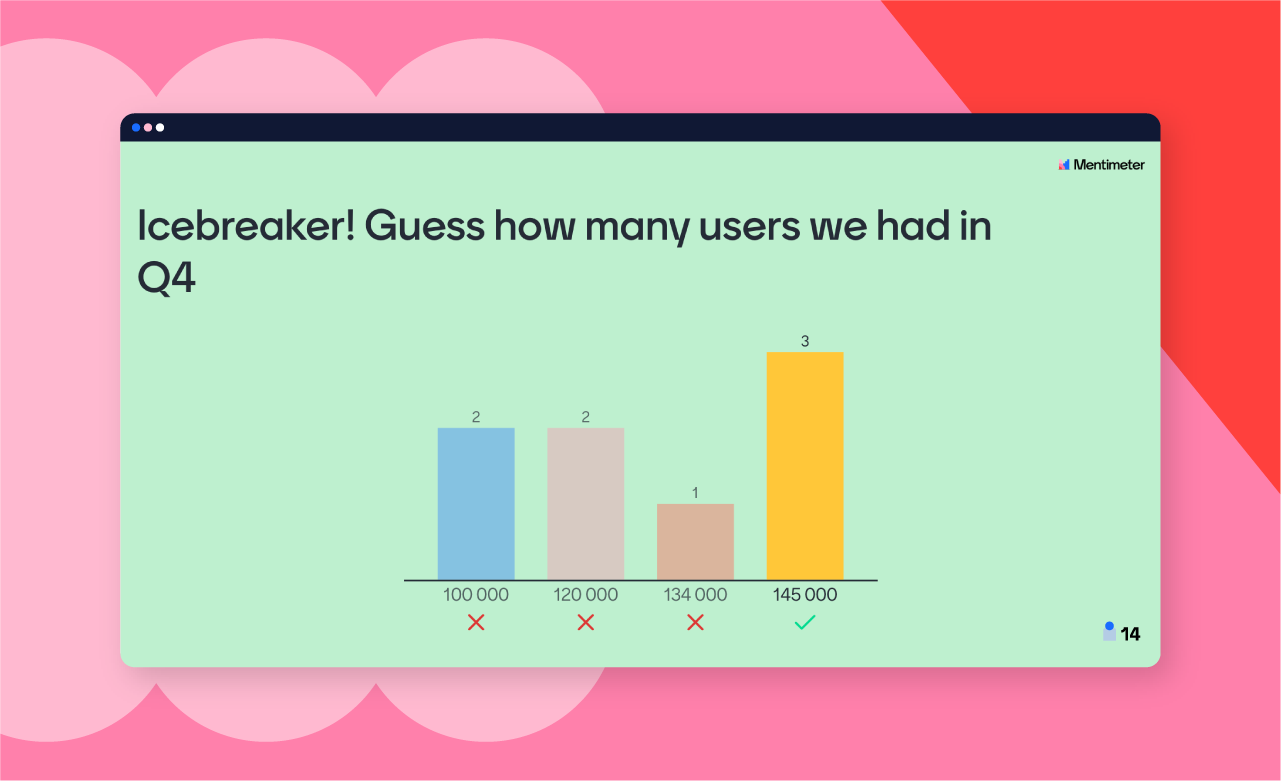
Why you need a meeting agenda
Sending an agenda before your meeting isn’t just a formality — it’s the key to a productive discussion.
A clear meeting roadmap makes sure everyone is on the same page. Clear objectives help focus discussions and allow your team to prepare meaningful contributions.
Another big bonus of sticking to your meeting agenda is time management. By designating specific time slots for each agenda item, you can:
- Streamline the discussion
- Stay on-topic
- Respect participants’ time
- Precisely plan and schedule your meetings
Not sure how long your meeting will run? Try our presentation timer beforehand for a realistic idea.
Meeting agenda must-haves
No matter the meeting occasion, there are a few basic things every meeting agenda should have:
- Clear title: Kick off with a crystal clear title, echoing the meeting's purpose, date, time, and location.
- Defined objective or purpose: Let the team know the “why.” Clarify the meeting’s objective in advance, giving everyone a chance to flex their prep muscles.
- Meeting overview: Briefly outline what's on the docket.
- Past action items: Reflect on past action items, pat yourselves on the back for wins, and tackle any lingering challenges.
- Preparation materials: Provide relevant documents or links so your team can hit the ground running.
- Time allocation: Assign specific time slots for each agenda item.
- Flexibility: Allow some wiggle room in the agenda for unexpected but crucial topics. Adaptability is your secret weapon.
- Inclusivity: Give participants a VIP pass to suggest agenda items in advance. Everyone's voice matters.
Tips for effective agenda implementation
It’s not enough to put together and share your agenda — the real art is sticking to it during your meeting. It’s easy to stray off-topic or let one enthusiastic employee run the show. Here are our top tips for making sure your meeting stays on track:
- Encourage pre-meeting communication: Set the stage for success by sharing the agenda in advance. Give your team a backstage pass to come prepared, fostering engagement and sparking meaningful discussions.
- Define roles and responsibilities: Picture this as the casting call for your meeting play. Clearly define each participant's role so that when the curtains rise, everyone knows their part.
- Designate a facilitator: Every great show needs a director. Designate a meeting maestro to guide the discussion, manage time effectively, and ensure all agenda items take center stage.
- Manage your time: Spend time wisely by setting realistic time limits for each agenda item.
- Track action items: Don't let the plot get lost. Clearly document action items during the meeting and assign responsibilities with deadlines.
- Promote participation: Turn it into a two-way conversation by creating an inclusive environment that encourages active participation. Invite input from all team members.
- Look for opportunities to improve: Solicit participant feedback on the effectiveness of the agenda and the overall meeting process. Use these insights to polish the script for future acts.
Keep your meeting on track with Mentimeter
Ready to elevate your meeting from standard to stand-out? Crate a powerful presentation that aligns seamlessly with your agenda. A well-designed presentation not only keeps your meeting on track but also harnesses your team’s valuable insights.
Mentimeter’s interactive platform simplifies meeting engagement with collaborative features like live polling and anonymous feedback. Experiment with some of our meeting and presentation templates for inspiration on how to make your presentations unforgettable.
Create your first Menti
Jetzt loslegen – kostenlos!


